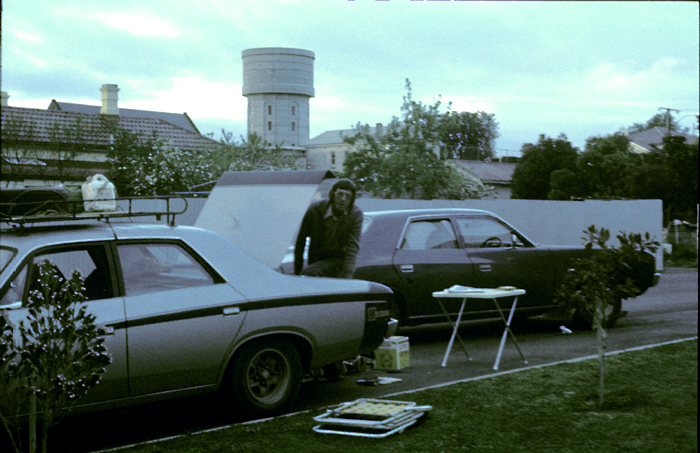
Following the wonderful success of the total solar eclipse on June 20, 1974 , it was only a little over 2 years until the next total eclipse was visible from Australia, October 23, 1976.
On this occasion, the track of totality began on the east coast of Africa, headed south-east across the Indian ocean, passed just south of Western Australia, before crossing the coast in southern South Australia, passing over Victoria, and then heading out over the Pacific to the north of New Zealand. Since the track of totallity passed only about 200km south of Western Australia, several members of the Astronomical Society of Western Australia decided to charter a light plane and fly down to the track. They decided on this approach to save driving for 3 days across the continent to reach the track. Personally, I wanted to view and photograph the eclipse with my 5" telescope, which was not particularly practical from an small plane. So I decided to drive to South Australia and view the eclipse from near the town of Millicent. This location was chosen as it was close to the centre line as gave the longest duration for totallity, about 2 1/2 minutes.
As is usual for eclipses, the biggest worry was for the weather. The south-eastern portion of Australia is amongst the cloudiest in the country, and during October, high pressure systems can sit in the Australian Bight causing onshore winds over this part of the country. Coming off the ocean, these winds are moist and frequently cause clouds to form for a considerable distance inland. Also, cold fronts can often move up from the southern ocean, bringing clouds and heavy rain. The general expectation was for about a 50% chance of cloud.
After spending a few days in Melbourne visiting relatives, I headed westwards along the southern coast of Victoria towards Millicent. For most of the way, there were clouds and frequent showers. not a good sign 2 days before the eclipse. At Millicent, I met up with several friends from the Society and we discussed stratagies. Two had decided to have a small plane on standby at an airport about 35km away in case of clouds. Others decided that they would just observe from the grounds of their motel. My plans were to go to an isolated area about 15km away, that I had found while driving over.
The day before the eclipse was one of anticipation, and for some, of trepidation. One of my friends had rented a 16mm movie camera and telephoto system for filming the eclipse. However it had not arrived on the flight it was supposed to be on. After spending several worrying hours and a number of long distance phonecalls, it was finally established that the equipment would be on the final flight for the night. It duly arrived much to everyone's relief. Driving out to the airport near sundown, showed a sky that was beautiful and clear, and we were treated to a beautiful sunset. On the way back to town, we decided to call in at the local weather office to check on the forecast for the next day. A look at the chart was disconcerting. There was a large cold front moving across the Bight towards southern Australia. The meteorologists were confident that the front would not arrive until after the eclipse was over, however there is always considerable cloud ahead of the front, so the forecast was for some cloud during the day.
On the day of the eclipse there was considerable cloud in the morning. However it was low and fast moving so we were still hopeful. At times the cloud would break and we would have sunshine for a period of time, but then the cloud would return.
About 2 hours before the eclipse was due to commence, we separated to go to our observing sites. There was still a lot of cloud around, though there were the occasional breaks.

Arriving at my site, the first thing was to set up the telescope. My aims for this eclipse were to photograph it through my 5" telescope. To film the eclipse with an 8mm movie camera, and to observe it through the telescope between photographs. For the filming, I had borrowed a friend's movie camera that allowed the shutter speed and the f-stop to be varied. This was as a result of my experience with my own movie camera at the 1974 eclipse. I hoped that I would obtain better results with this camera, that my friend had used very successfully at the 1974 eclipse. For my 35mm photography I was experimenting with a roll of Kodak high speed Ektachrome infra-red film and a roll of ordinary high speed Ektachrome 160. I was hoping to get some interesting effects with the infra-red film.
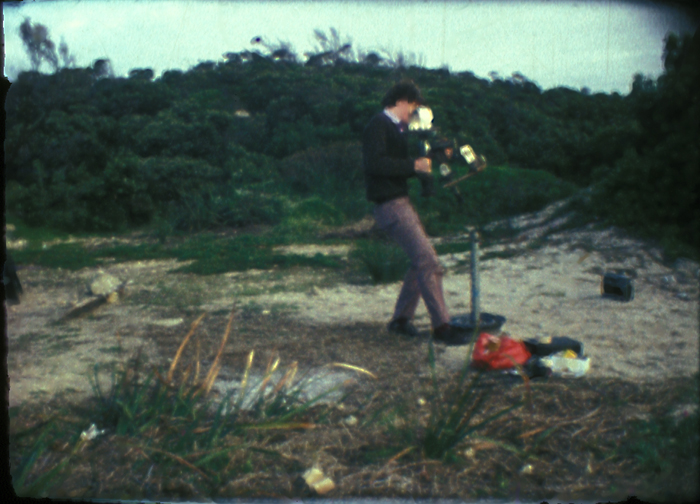
The skies were still very cloudy, and I was beginning to worry about what we would see.
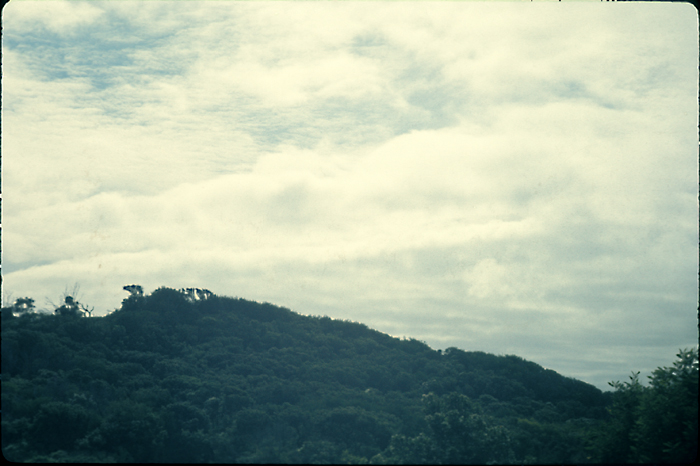
A few others arrived at the site, some with their own telescopes, but most just to watch.
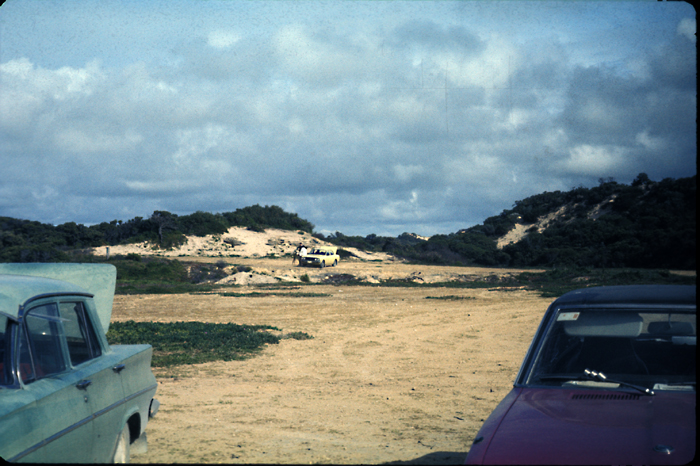
Shortly after first contact, there was a break in the clouds, allowing everyone a good view of the partially eclipsed Sun.
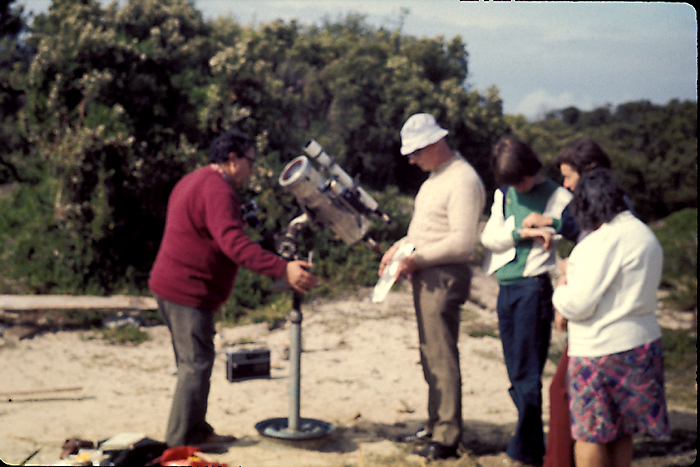
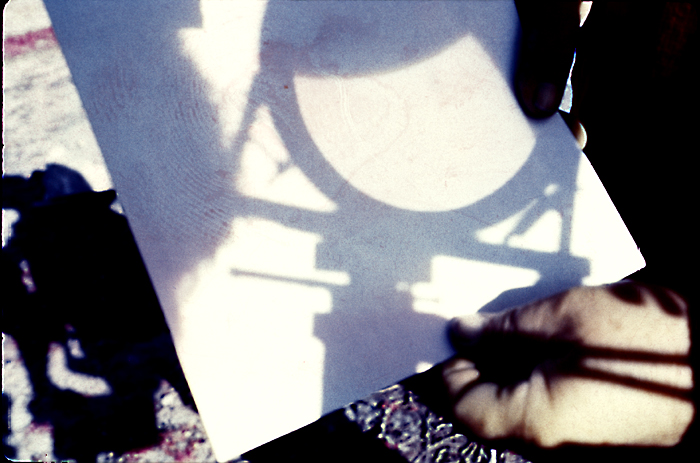
This break lasted for about 15 minutes and then the clouds moved in again. Then about 15 minutes later there was another short break in the clouds.
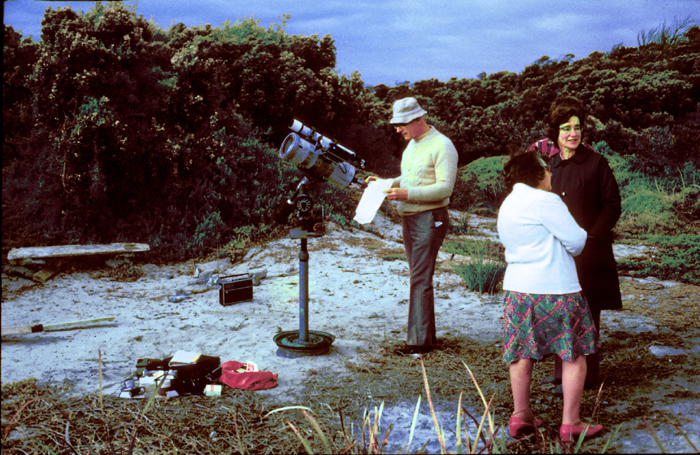
(If the colours look a little strange in some of these few images, it is because I was experimenting with colour infra-red film, and I did not have a filter! Even Photoshop has its limitations!!)
About 15 minutes before totallity, the outlook was very bleak! There were heavy clouds covering the entire sky!
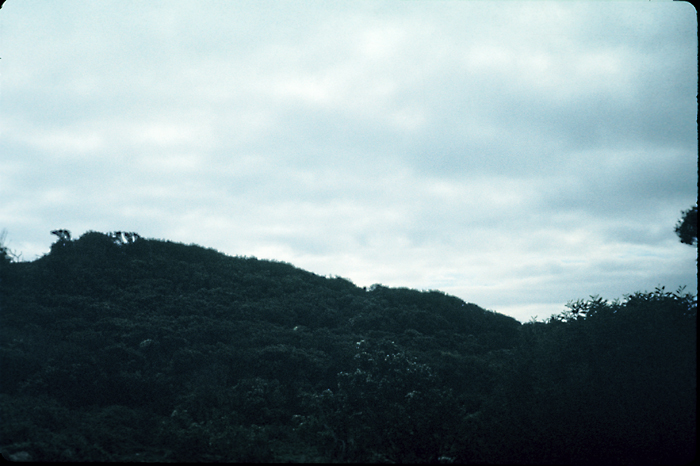
However these clouds suddenly disappeared and the sky was clear less than 10 minutes before totallity!
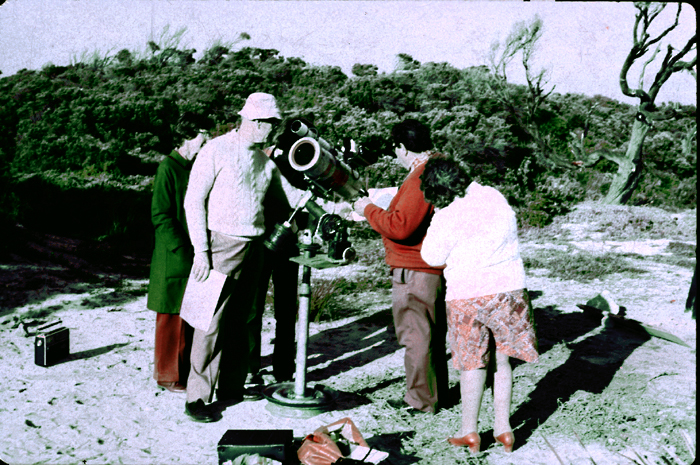
This provided a good opportunity to demonstrate to everyone, the effects of the Sun shining through the bushes. Unfortunately, this clearing did not last, and as totallity approached, some thin clouds began to cover the sky.
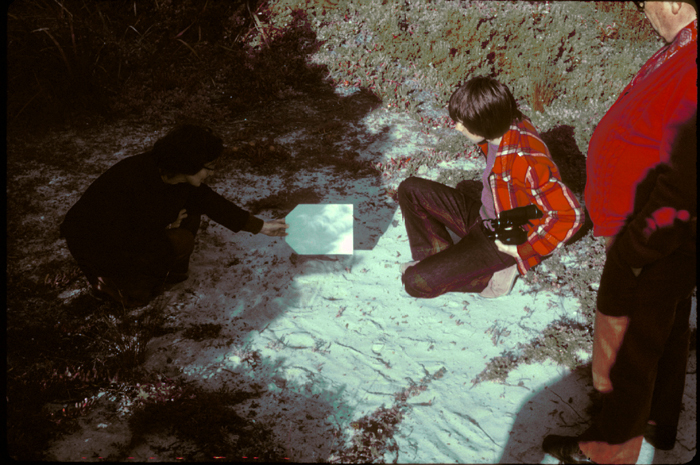
As totallity began, the sight of the approaching shadow of the Moon was most impressive. It looked like a black wall in the sky heading towards us. Since there was some thin cloud around, I decided to remove the filter from the movie camera about one minute before totallity. This proved to be a very fortuitous move as it enabled me to film a magnificent Diamond Ring.
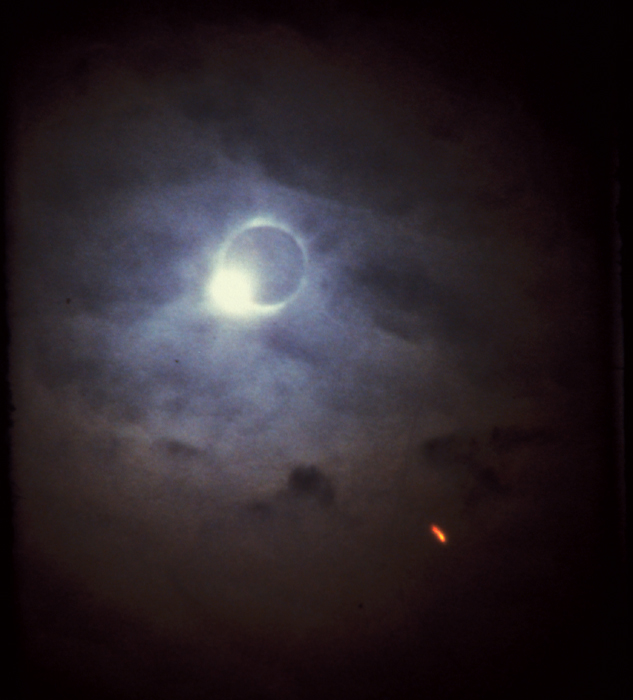
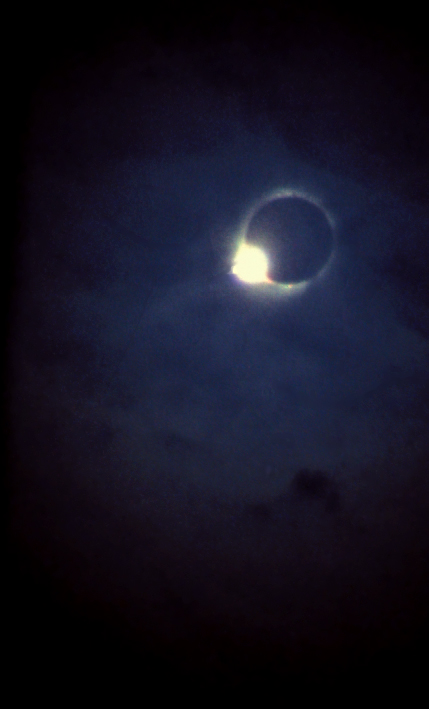
Also on the film were visible numerous sea gulls milling around in the encroaching darkness.
Once totallity arrived, I switched to viewing the eclipse through the 5". The sight was magnificent! The thin clouds did not interfere with the view at all. There were several prominences visible as was the chromosphere for a few seconds. However I did not have much time to linger, as the onlookers were eager to have a look and I wanted to get as many photographs as possible.
About half way through totallity, I decided to play around with adjusting the f-stop of the movie camera in order to highlight different regions of the corona. In the process I changed the shutter speed to make the change in f-stop as smooth as possible. Unfortunately this was a mistake, as the exposure was too short to show the eclipsed Sun through the clouds. However up until then, the movie turned out to be very interesting, as patches of cloud would pass across the corona, blocking out different portions of it. The result was it appeared as if flames were flickering around the Sun, sometimes breaking off and moving away!
In addition to the movie, I took about 20 photographs of varying exposures with the 35mm camera. However when I had the films processed back in Perth, there was a problem with the processing and all of the rolls were underdeveloped! As a result very little could be made out on the photos. Perhaps these days with scanning and image processing something could have been salvaged, however the slides have become lost over the years during numerous changes of residence. Also about 6 were lost be the company! No explanation was ever given by the company as to what happened, and even after all these years I am suspicious!!
As totallity ended, there was a second spectacular Diamond Ring, however this happened while I was changing film in the movie camera. As the diamond ring brightened, signaling the end of totallity everyone cheered the sight. There was much laughter and joy over what had been seen despite the thin cloud. Although most people left shortly after totallity was over, I decided to stay and watch until the end of the partial stages.
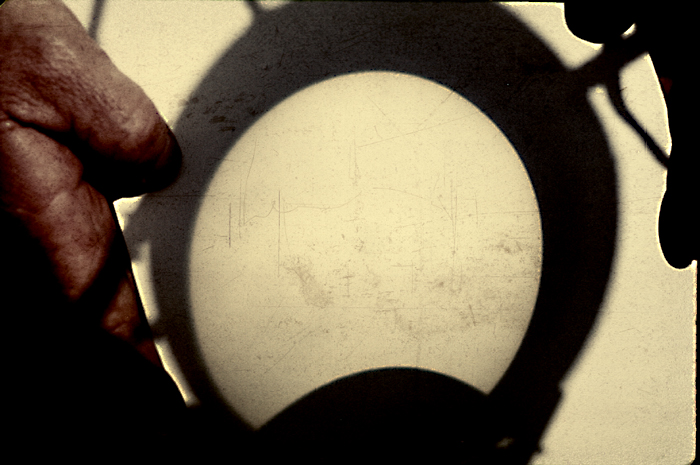
Meeting together at the motel afterwards, we decided to have a celebratory dinner in the restaurant and to swap stories. Those who had stayed at the motel had had a good view, although there was some interference from the same thin clouds that had dogged me. One observer from Melbourne had tried to record the eclipse through a Celestron 8 telescope using a video camera. (They were very new in Australia then. So new that none of us had ever seen one!!!) Unfortunately the sensitivity was too low for him to focus properly during totallity, although he did have some good views through the telescope.
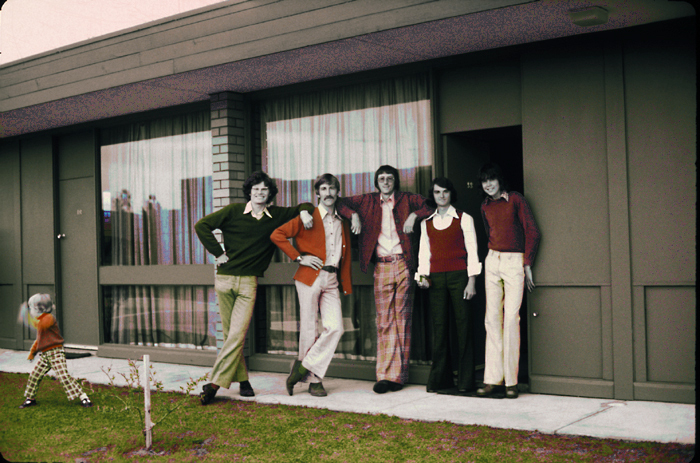
The two who had the light plane on standby, decided at the very last minute to take it. It was well and truly the last minute! With only about 20 minutes until totallity they were still trying to decide!!! When they decided to go in the plane, they called the pilot to let him know they were coming. They then made the 35km drive to the airport in less than 15 minutes, passing numerous cars parked on the side of the road as people were watching the eclipse! Then they had to run to the plane, which was waiting at the end of the runway, jumping in as the pilot was heading down the runway for takeoff. The pilot climbed steeply to around 16,000 feet (no oxygen!!!) heading for a hole in the clouds. They leveled off just as totallity started. They had a fine view of the eclipse, however by the end of totallity they were starting to feel a little high from lack of oxygen! Their photographs of the eclipse were very interesting!!!???? It is amazing what people will do when they are not getting enough oxygen!!! :-}
Following the dinner I started the long drive home. I had barely left the town when the cold front arrived and the rain started to pour down. We were all very glad that it had not arrived a few hours earlier!